From the Philippines to West Africa and beyond: Exploring Winnipeg’s restaurant scene is a culinary trip around the world
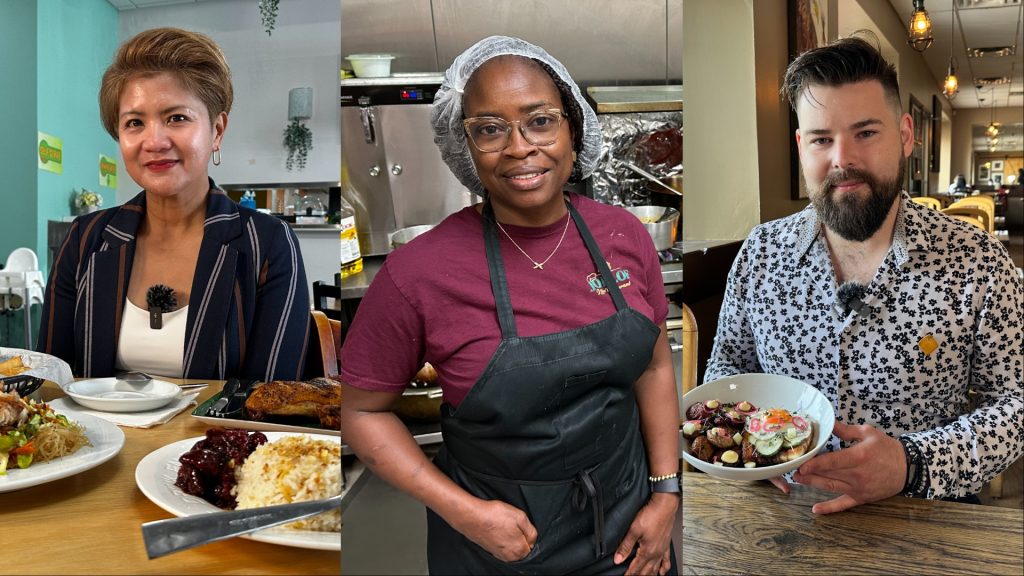
Posted August 14, 2024 1:55 pm.
Winnipeg is known for a lot of things: its scorching hot summers, freezing winters, being “The Slurpee Capital” of the world.
But what I love most about Winnipeg is its rich and diverse food scene. A trip to the right restaurant can make you feel like you’ve gone on an adventure to a far away place while staying in the city.
Don’t believe me? Our first stop is Foodtrip Kitchen, where we get a real taste of the Philippines.
FOODTRIP KITCHEN
Owner Lourdes Federis opened the restaurant in 2020, right when restaurants all over the city were closing their doors due to the COVID-19 pandemic.
“Everybody was closing, and people were saying we’re crazy (that) we’re opening. So that’s the first time I ever run a restaurant. No experience,” said Federis. “A lot of people are kind of throwing the towel at that time. They thought, it’s like it’s the end of the world. But I saw it as an opportunity. Like I literally said, I’ll catch those towels.”
Federis says it was all worth it for what she was able to do for the community.
“I feel like we kind of show a little bit (of) hope to the people at the time. Like, we can still keep going ’till normalize, at least this part of our life during the pandemic. So we did takeout and pickup only,” said the restaurateur. “For a more than a year, we functioned as that until that city slowly opened. And now we are a regular restaurant.”
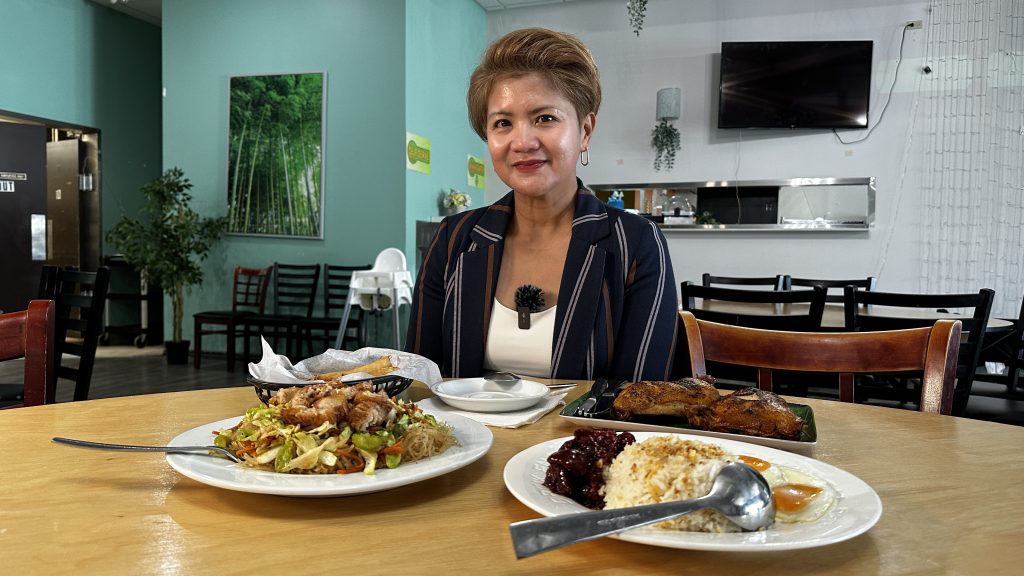
Four years later, Foodtrip has become a Filipino staple in Winnipeg.
Walking into Foodtrip Kitchen feels like being greeted by the familiar sights, sounds and smells of a traditional Filipino household. Green walls accent the display of sweet treats from adjoining Filipino business, Bakers Bowl, and to the left side of the restaurant is a large seating area with dozens of tables and chairs where many families have hosted large, traditional get-togethers like birthday parties or christenings.
Playing to the concept of community and togetherness, in the large seating area there’s also a small stage where hosts can make their announcements as the evening goes by (and, presumably, at one point in the night, possibly sing some karaoke).
As we celebrated the diverse cultures that make up our city, Federis gave us a taste of the homeland through traditional foods like lumpia, pancit and pork sisig. We also learned about the different regions of the Philippines and how to prepare some of the foods.
“(This dish) is pretty popular in Bacolod, it’s chicken inasal,” said Federis. “We have 8,000 islands, so there’s several popular foods from each region. This is more on the Bacolod, on the Luzon side of the country.
“It’s marinated with lemongrass … Usually, the most we do it is two days because that flavour has to be in there. And then once marinated, we bake it and barbecue.”
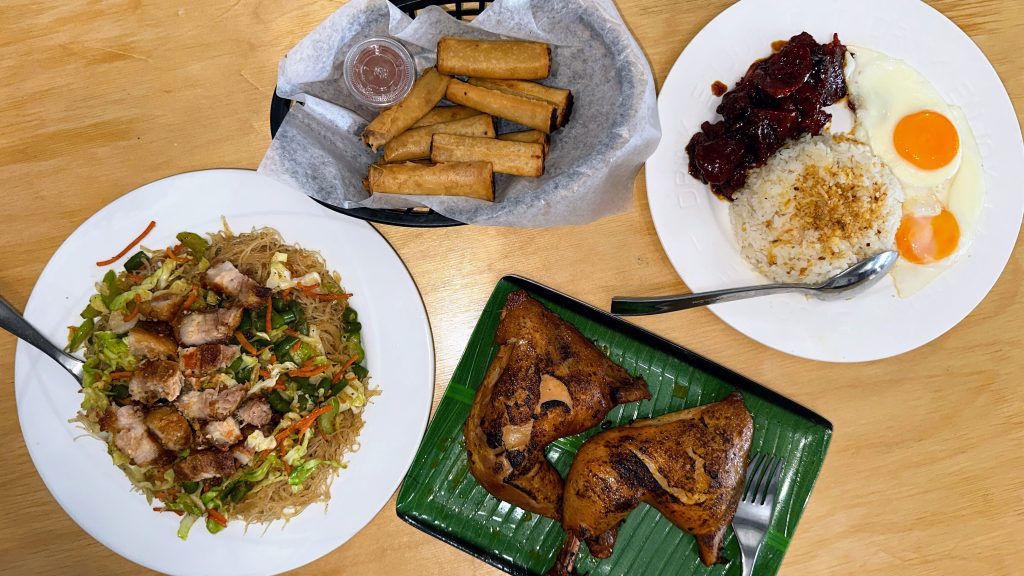
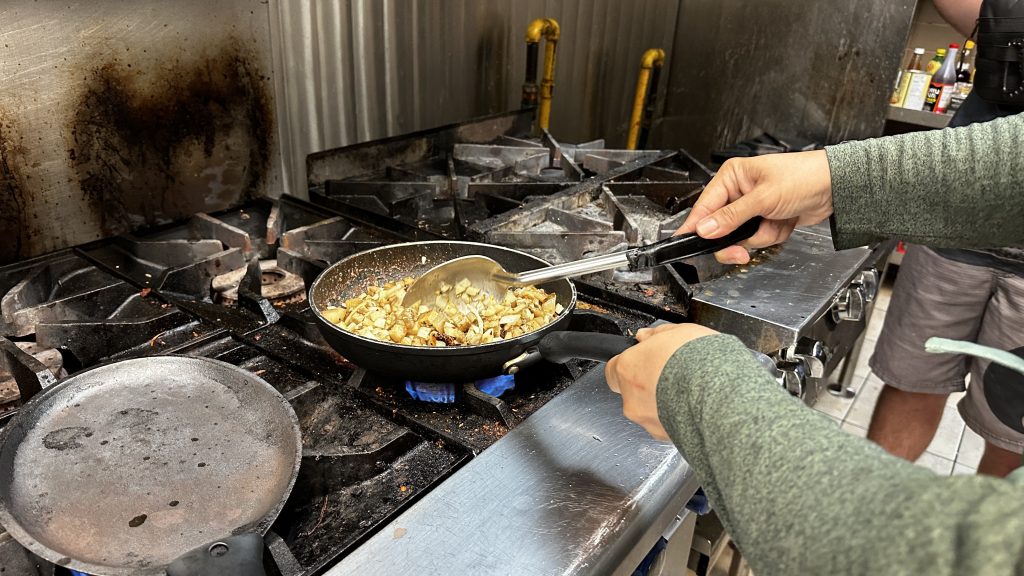
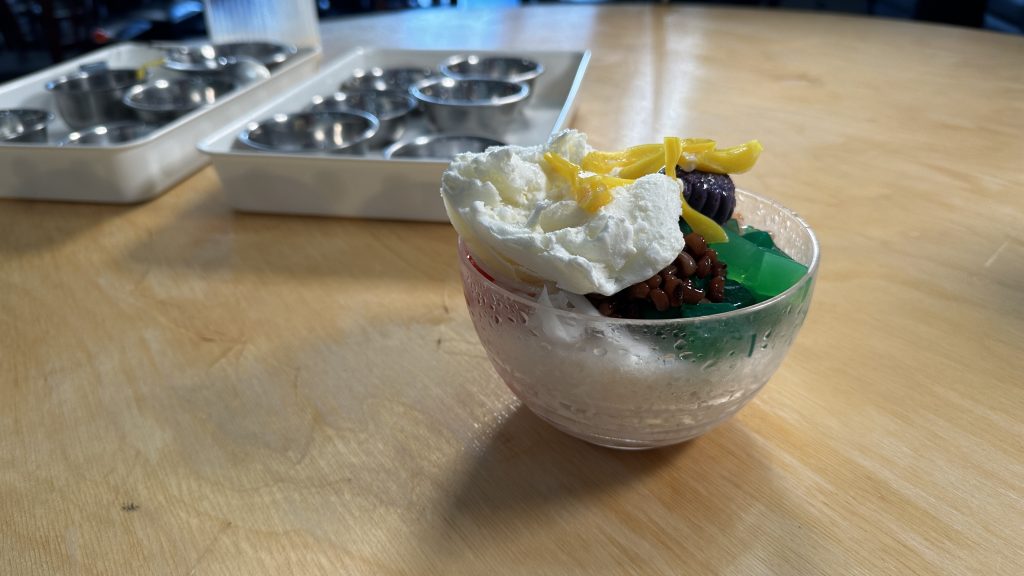
We also tried a traditional Filipino dessert: Halo-Halo, which translates from Tagalog as “mix-mix.”
Federis mixed shaved ice with jackfruit, jelly, white and red beans, unsweetened banana, coconut strings and palm, ice cream, lechon, ube and evaporated milk.
“Everything that you can find in the Philippines, it’s all in there,” Federis said.
Federis said she wants people – Filipinos and non-Filipinos alike – to know her restaurant is a place to gather and share the culture.
“That’s how we really learned our food, passed on to us. Our parents or aunties would ask us, ‘You have to help out’ because, you know, that’s how it is in our household, right? The girls had to help in the kitchen. So that’s how you learned.
“Food is very universal. And it’s a very important way to transfer and teach our kids about our culture.
“Sharing it with the non-Filipinos as well, that’s even more exciting. Because sharing your culture through in a way that is more tangible so that they can actually see and taste our culture, that is the most exciting.”
JOLLOF LIFE RESTAURANT
Winnipeg has over a thousand restaurants, and each of them brings something different to the table. The right restaurant can make you feel like you’re thousands of kilometres away, in a new place and experiencing a new culture – without actually having to leave home.
Our next stop on this food trip is Jollof Life Restaurant, where a piece of West Africa lives right on Portage Avenue.
Restaurant owner Taiwo Ojo wanted to introduce her culture’s food to Winnipeg, not only for the locals but also for immigrants from West Africa, so they could still hold onto their homeland from their new home in Canada.
“This is a dream I’ve had for a long time. I’ve always wanted to have a restaurant. Over the years I was cooking. I (ran) kitchens, I just cooked for parties. But I had a desire to cook and have my own space. And 2022, it came,” said Ojo.
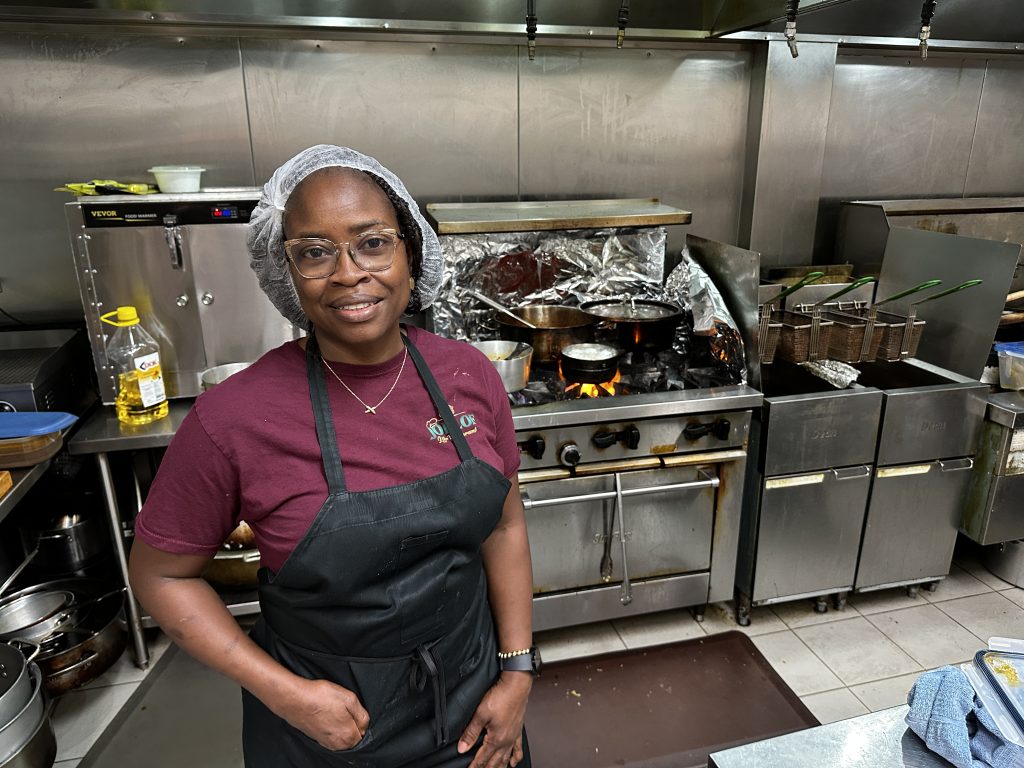
Her vision was to make Jollof Life Restaurant a hub for Winnipeg’s West African community, as she said most experience a big culture shock upon arriving in Canada. Many eventually go back to West Africa, she says, because there isn’t enough of the culture here to truly feel like home.
Starting from the name of the restaurant, Ojo wanted the community to know West Africa truly does have a place in the city.
“Jollof rice, it’s an African dish, West African. We have different countries with different ways of making the jollof rice, but in Nigeria we have a specific way and the name actually came from that dish,” said Ojo. “I make jollof rice a lot. I would say we make one of the best jollof rice Winnipeg.”
She says having familiar foods from the homeland helps people settle in more quickly with a more positive experience.
“They’re able to do whatever they want to do here as well, because this is home. When we leave home back there and when we come here, this has to be our new home. We should be able to adjust and adapt to whatever the system brings. (If the food is) added here, there’s nothing you’re missing again.”
I had no idea what to expect walking into the restaurant, coming off the bustling streets around Portage Avenue. Even though the restaurant wasn’t yet open when I arrived, it was bustling, too — with Ojo and her staff preparing vast amounts of food for customers that would be walking in the minute the restaurant opened.
“We’re ready for them to eat and it’s available all the time for them,” said Ojo.
Although the atmosphere was busy, it wasn’t like the dragging crowds or heavy traffic we see on the streets just outside the restaurant. This was more lively, akin to the energy I experienced at Winnipeg’s first Naija Market Day, where people wanted to engage with warmth and excitement for a true West African welcoming.
The bustle of people coming in through the doors didn’t stop for the near 3 hours we were filming at the restaurant. While most customers were camera-shy, they were not shy about letting us know they think the food is among the best in the city.
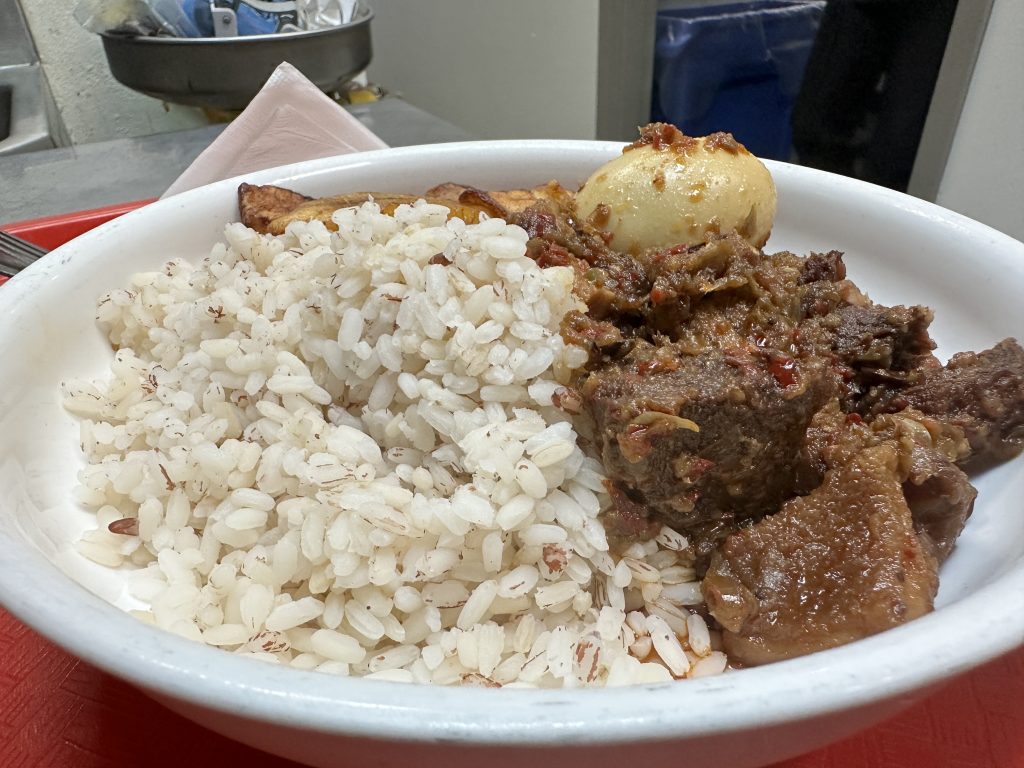
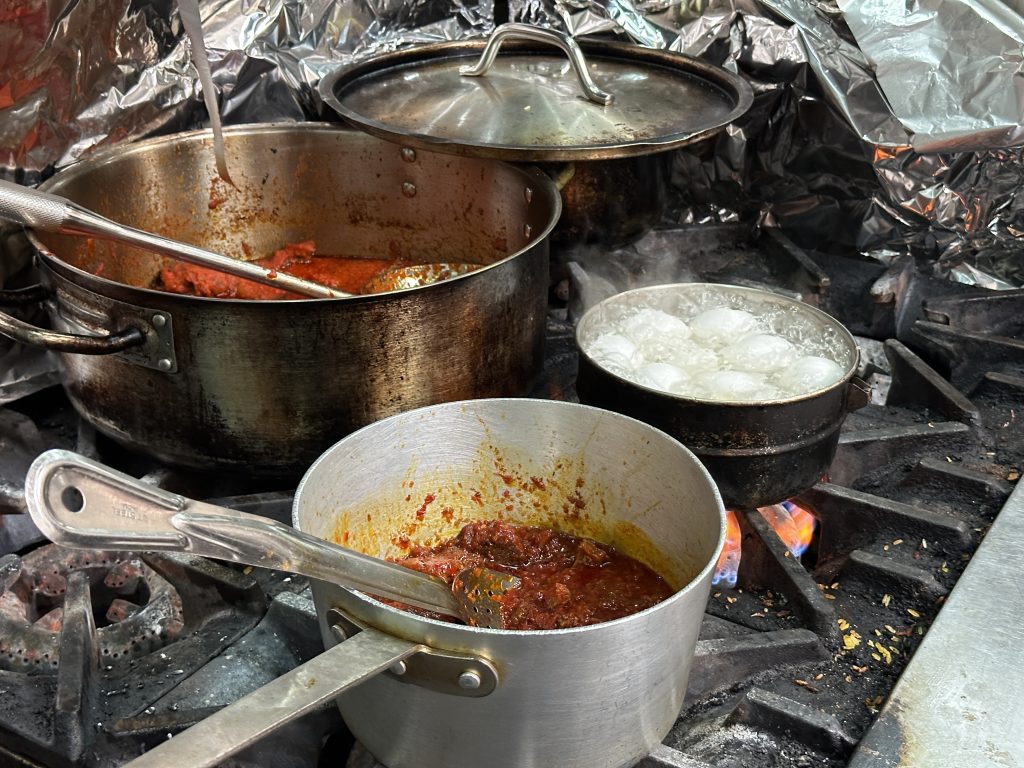
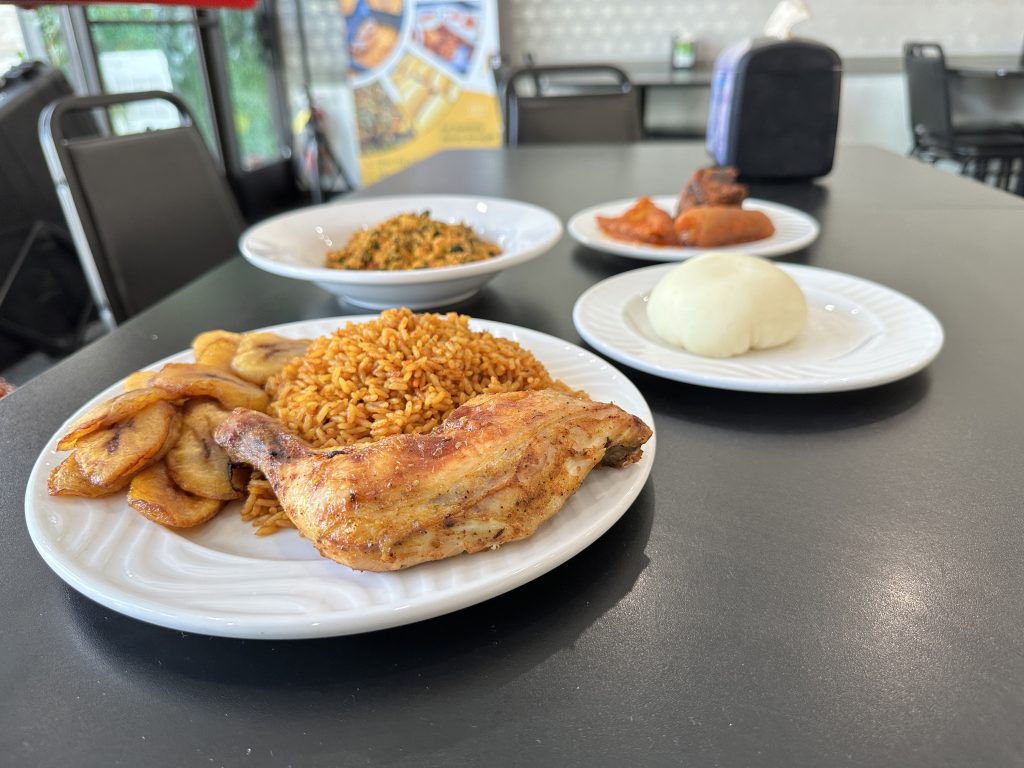
Jollof Life Restaurant’s food is served similar to a buffet line, with different dishes in heating trays and ready for people to mix and match as they create their own meals.
Not only did we get to try Ojo’s famous jollof rice, we also sampled other dishes — all made with authentic ingredients. From ofada rice with ayamase sauce to cow skin, jute leaves, amala and egusi soup, each dish had its own unique flavour profile and texture.
“(Food is) always necessary. People will want to eat. So we want people to have options of going to different places and be able to eat,” said Ojo.
Although Ojo did accomplish her dream, she’s dreaming even bigger. In the future, she would love to open multiple restaurants to serve different parts of Winnipeg.
“We’re working towards it. We’re going to get to that stage one step at a time.”
PROMENADE BRASSERIE
Now, all this travelling has me craving some comfort food. And what brings better comfort than food from home? I’m excited to show you more about Winnipeg’s culture, because sometimes it feels like we forget we’ve got our own.
Just at the end of the Provencher Bridge is Promenade Brasserie, and they’re looking to put our Métis and Francophone heritage on the map as food to try – whether you live in the city, or want to taste what it’s all about.
The restaurant has been a well-loved spot in Saint Boniface for decades. Before Promenade Brasserie opened in 2023, the restaurant was simply called Promenade. The community took a big hit when the original restaurant closed its doors during the pandemic.
But owner Jay Lekopoy saw it as an opportunity, not only to showcase food from home, but also as a way to work with local vendors to use local ingredients, and pay homage to the iconic Promenade restaurant at the same time.
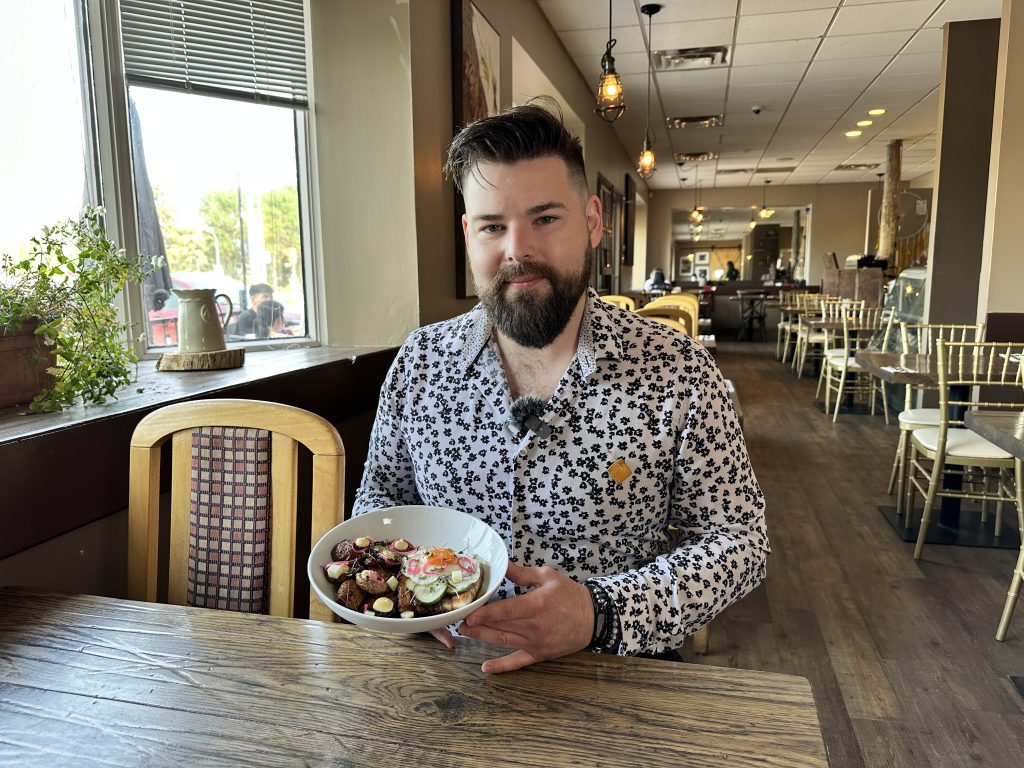
“It’s not fair to say that Manitoba food is just traditional ingredients,” said Lekopoy. “It’s not just for European food, it’s not in any one box. … It’s everything from a Fat Boy burger to some of the fancier stuff to wild mushrooms. It’s going out camping and having a bonfire because you just pulled some beautiful trout and pickerel and walleye from the lake.
“There’s something so honest about it. And I think that we have the opportunity right now to really claim that.”
Lekopoy said he not only wants to be able to champion everything local, he wants Promenade Brasserie to be a place where people can gather and experience ‘the traditional feast’.
“When I talk about traditional feasting, it’s really about food as a means of nourishing your mind, your body, your soul, and as a means of bridging the gap for togetherness,” he said.
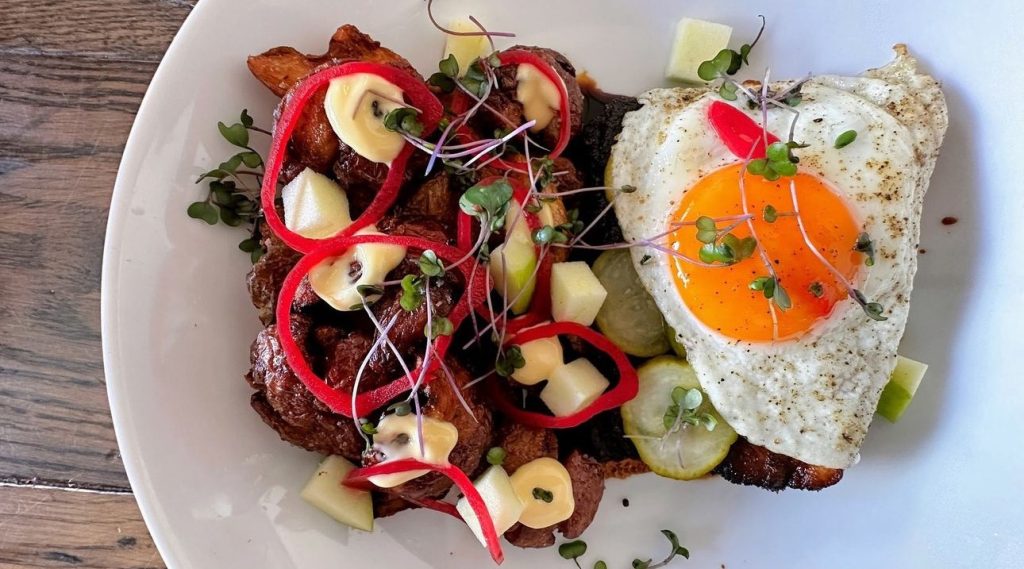
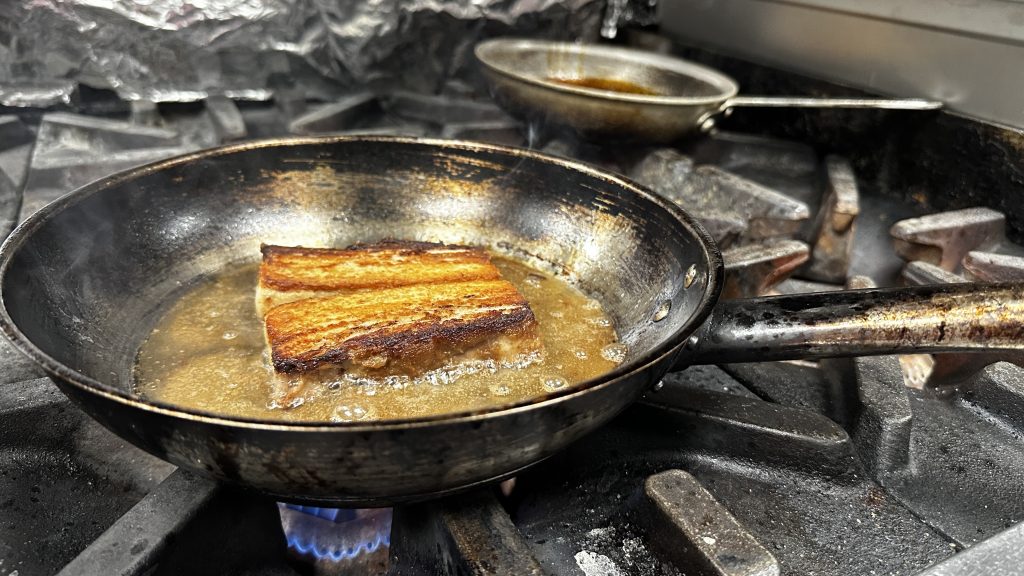
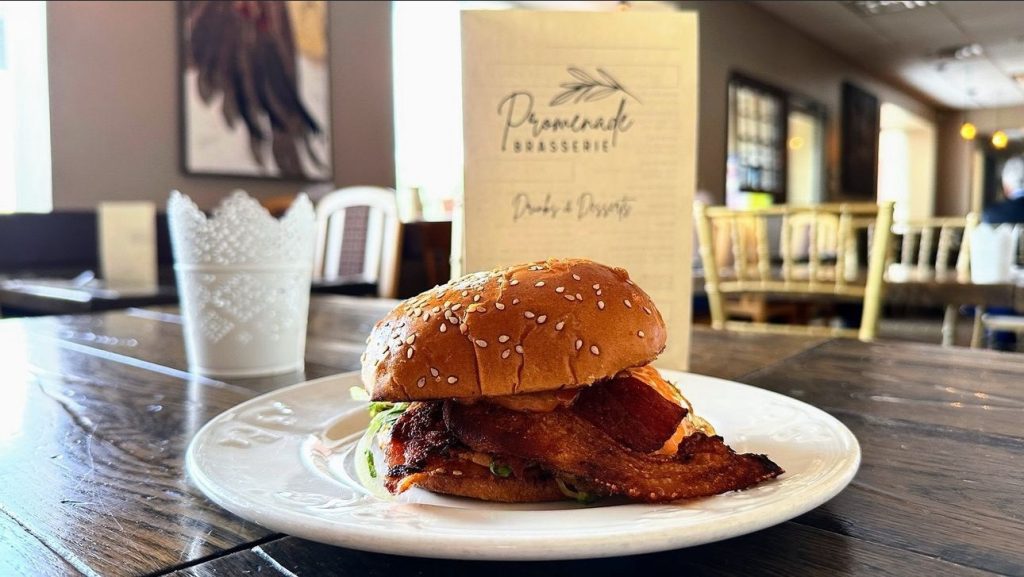
The vibe at Promenade Brasserie is surprisingly different from the moment you walk through the doors from crossing the bridge, where both cars and green transportation commuters are hurrying to get to their destinations. When you cross the threshold into the restaurant, there’s a sense of calm that begins with the warm greeting by staff, soft lighting, and the invitation to settle in and make yourself at home.
It’s a deliberate atmosphere that reaches each corner of the restaurant, as I learned from Lekopoy.
“As a restaurant, you have to be so mindful of your third place because you’re not home, you’re not work. You need to be a place where people can come and unwind and relax.”
During our time at Promenade Brasserie, we were able to watch head chef Cameron Hornby make the restaurant’s version of “bacon and eggs,” albeit with a twist — pork belly took the place of bacon, with ‘smashbrowns’, pickled shallots, apple jus and garlic aioli paired alongside a sunny-side up egg finishing the plate.
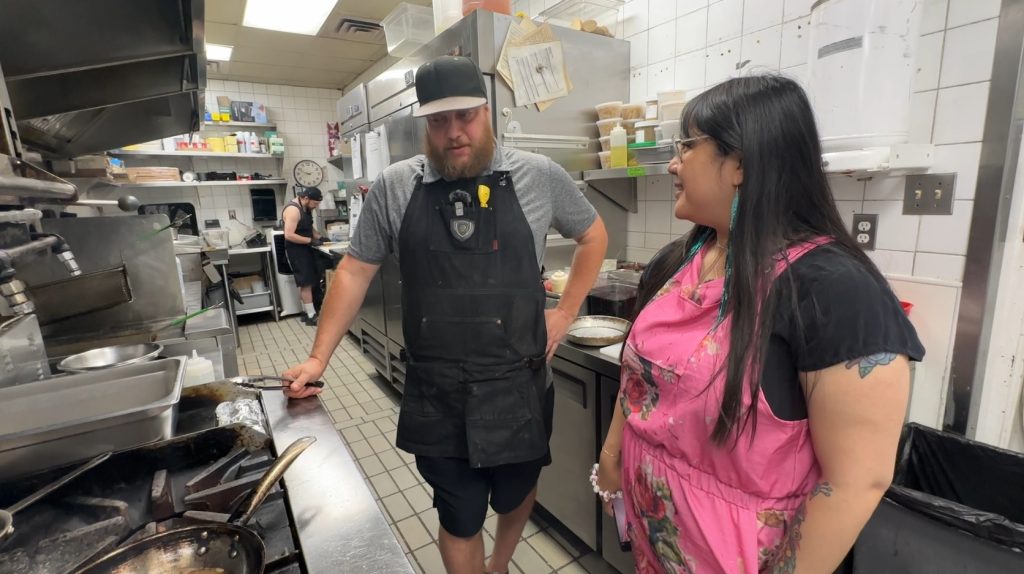
It’s an endeavor to blend passion with history for today’s modern-day world.
“Saint Boniface is really about … recognizing where we’re from and everything that had to come together for us to be where we are today,” said Lekopoy.
“We have to be restorative as a restaurant, where we were letting people relax and just be.”
From the convivial green walls of Foodtrip Kitchen, where I tried the chicken inasal but not my hand at karaoke (or did I?), and the unadulterated energy of West Africa at Jollof Life Restaurant, to the deliberate tranquility of the reborn Promenade Brasserie, thus ends my global food trip of Winnipeg.
But those were just three stops among hundreds of possibilities; the Winnipeg restaurant scene lets you set foot in the Philippines, Nigeria, Argentina, Thailand or Mexico — and beyond — on any given day or night.
Where will your food trip take you?








